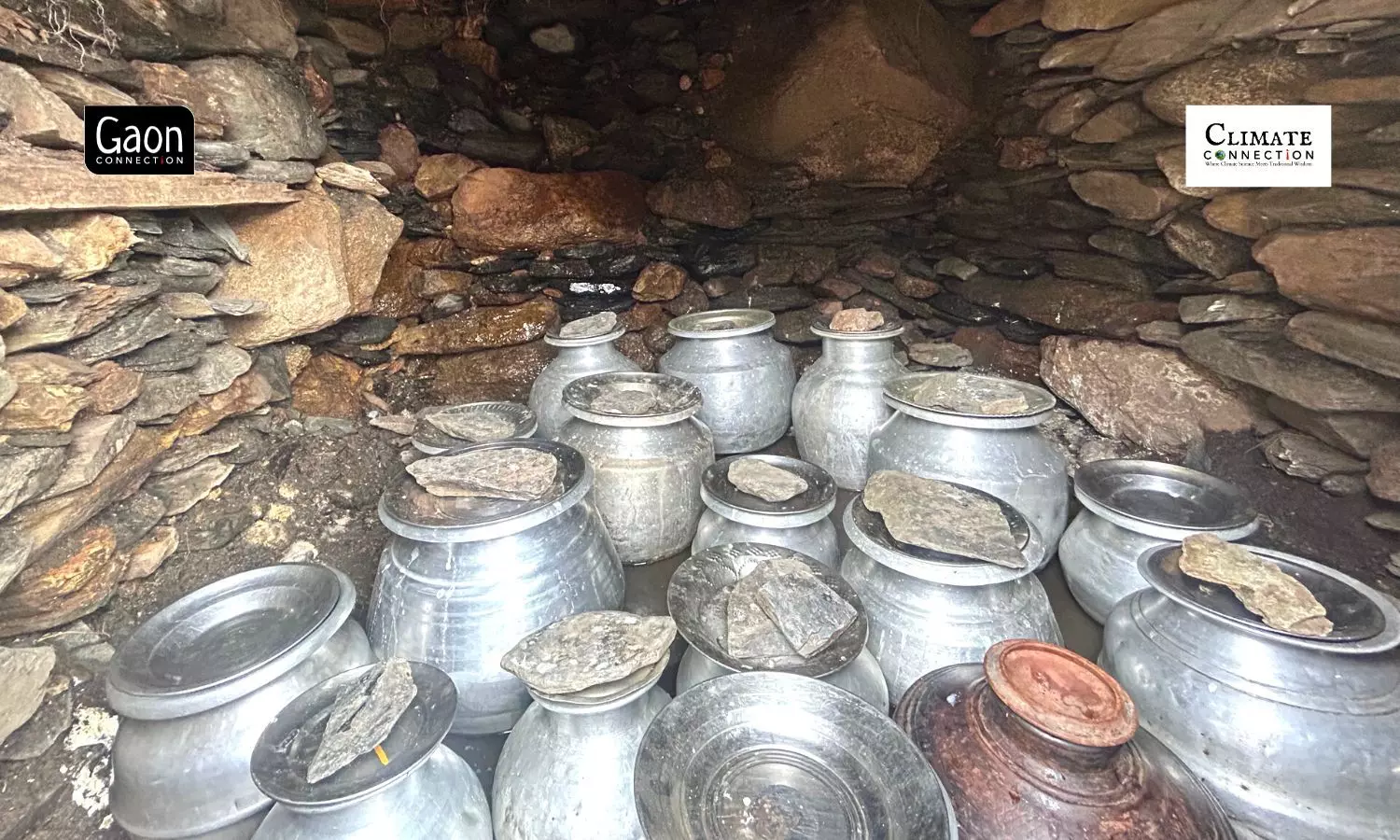An Ancient Technique of Storing Milk in the Cave-Like ‘Doud Khot’ Still Thrives in a Village in Kashmir
Residents of Dudran, a village of milk, in Baramulla do not need electricity- consuming refrigerators to run their milk business. Traditional wisdom is what they rely on.
 Tauseef Ahmed 8 Dec 2023 10:27 AM GMT
Tauseef Ahmed 8 Dec 2023 10:27 AM GMT

Located in Baramulla district in North Kashmir, this village is known for its dairy products such as milk, curd, butter, and cheese. All Photos by Saqib Bashir.
Baramulla, J&K
The name of Dudran village means a “village of milk”. Located in Baramulla district in North Kashmir, it is known for its dairy products such as milk, curd, butter, and cheese.
This remote village of 79 households has a special significance because of an ancient practice of storing milk, which its inhabitants have kept alive for generations.
Doud khot are small cave-like structures that act as natural refrigerators for the villagers who use them to store the milk and milk products. These are constructed over or near natural springs that keep the products cool and fresh.
The khots have stone walls and wooden roofs, and have wooden fencing around them to protect the milk and other products from animals. Villagers deal in only cow milk and its products.
The khots have stone walls and wooden roofs, & have wooden fencing around them to protect the milk and other products from animals.
This ancient practice of storing milk and milk products in doud khot requires no electricity supply and milk remains fresh for several days. No wonder this traditional method of storing milk using techniques handed down to them from their ancestors is now being termed as a climate resilient practice.
Also Read: Potatoes: Buried Treasure in Gurez Valley
According to Aashiq Ahmad, a 43-year-old who lives in Dudran, “Every household here produces up to 15 litres of milk each day. And many of them also make butter, cheese and curd from the milk.”
But all the milk and its products are stored naturally in doud khots created and maintained by the villagers.
Taja Begum who makes butter and curd uses the doud khot to good effect. "To make butter and curd, I store two or three pots of milk in the cave. After four days, I take the milk home and churn it into butter,” the 53- year-old told Gaon Connection.
The fresh milk is stored in pots — earthen or steel — inside the khots to keep it hot in winters due to sub zero temperature outside, and after that it becomes easy for villagers to convert it into curd.
Dr Irshad Ahmad, in charge of the Animal Husbandry Department, Boniyar division of Uri Baramulla, said that many of the khots used by the villagers even today are around 500 years old. “People continue to use them in absence of modern technology,” Irshad Ahmad told Gaon Connection.
The fresh milk is stored in pots — earthen or steel — inside the khots to keep it hot in winters due to sub zero temperature.
Villagers claim that because there is no use of artificial preservatives and the dairy products are entirely natural, they are bursting with health and nutrients.
“Our milk and milk products are tasty and healthy. And, because the doud khots are so efficient, there are no electricity bills to contend with,” Mushtaq Khan, who lives in Sheeri Baramulla and buys Dudran’s products regularly, told Gaon Connection.
According to villagers, through their milk business, households who sell milk easily earn up to Rs 9,000 a month, and there is no additional expense of refrigerator and electricity bills.
Also Read: Rural Women in Baramulla Discover Joy in Making Jam
In summers, almost every household in Dudran stores milk, which is turned into butter and curd through a process called gurus in the local language.
“It is an age-old practice. Our ancestors did the same,” said Ghulam Ahmad Khan a 55-year-old inhabitant of Dudran, whose family sells anything up to 30 litres of milk every day in summers.
In summers, almost every household in Dudran stores milk, which is turned into butter and curd through a process called gurus in the local language.
Explaining how the traditional method of gurus works, 53-year-old Fazi Begum said, "For making butter and curd, around two to three full pots of milk have been stored in the cave. After four days, it is taken home where with the help of a wooden churner the milk gets converted into butter within an hour.”
Most of the villagers from Dudran sell the milk they get from their cows at a rate of Rs 30 per litre to Rehman Khan, a 46-year-old milkman. “Most of them sell 50 per cent of the day’s milk to me, and keep the rest to make curd, cheese, and butter which they then sell,” he told Gaon Connection.
Rehman then takes the milk and sells it in nearby towns and villages.
Also Read: Young Kashmiri Women Find Success in Trout Fish Farming
According to Dr Irshad Ahmad of the Animal Husbandry Department, Dudran village produces around 1,750 litres of milk on a daily basis. “The Uri sub district produces 19,000 tonnes of milk a month,” he told Gaon Connection.
Inhabitants of Dudran believe that it is the pure, unadulterated milk and its by-products that keep them healthy. In the absence of modern healthcare facilities, their homemade products come to their rescue to treat various ailments.
"We use the liquid produced from making butter to treat diarrhoea and digestion problems. My father used to give it to me, and I use the same remedy for my children,” Sajad Habib, a 47-year-old father, told Gaon Connection.
#jammukashmir #climateconnection #milkbusiness
More Stories




